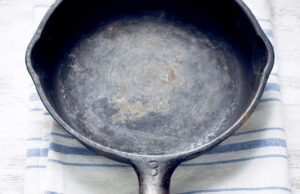As an Amazon Associate, I earn from qualifying purchases at no extra cost to you.
The Best Way to Use Your Samsung Dishwasher (Expert Tips)
A friend once told me she bought a Samsung dishwasher and then stared at it for a week because she was scared to press the wrong buttons. I laughed because I did the same thing when I first tried mine. You think it should be simple, yet there are small details that change everything. So here we go, clear steps, real tips, no confusion. Ready to feel like a pro?
To use a Samsung dishwasher correctly, always load dishes with space between them, scrape food bits but do not pre-wash, choose the right wash cycle for soil level, add the right dishwasher detergent and ensure rinse aid is filled, place items facing the spray arms, close the door firmly until it clicks, select options like sanitize only when needed, and let the dishwasher fully dry before unloading from bottom to top to avoid water drops.
Prepare Your Dishes and Loading Area First
Many people rush and shove plates everywhere, then wonder why cups still have crumbs or the bowls collect puddles. I once crammed my breakfast bowl sideways and the spoon blocked the spray arm—everything came out cloudy. Therefore, preparing and loading with intention really matters. Even though it feels slow at first, it becomes automatic over time and saves you rewashing later.
Always start by scraping food scraps into the trash or disposal. You don’t need to fully pre-wash; Samsung dishwashers handle grime well, but stuck oatmeal or dried rice is stubborn. I usually give plates a quick swipe under running water only if food is glued on. Then, I check the racks for anything that might block movement, like a stray chopstick or dropped fork hiding under the tines. Ever found one after the cycle? Annoying, right?
Next, place plates vertically on the bottom rack and space them slightly apart. Bowls angle toward the center spray arm for better water reach. Taller items like cutting boards should go on the edges so they don’t block detergent release. On the top rack, cups go upside down, and plastic containers need to be secured so they don’t flip. When they flip, they fill with water and you end up hand-drying anyway, which defeats the whole point.
Finally, check that the spray arms spin freely. Sometimes one teaspoon handle blocks everything without you noticing. I always spin them gently by hand before closing the door. It takes two seconds and saves frustration later. If something sounds off, rearranging one cup usually solves it. And honestly, once you get used to this little routine, you’ll wonder how you ever loaded randomly before.
- Scrape food bits, don’t pre-wash fully
- Angle dishes toward spray arms
- Keep tall items at edges
- Spin spray arms to check clearance
Add Detergent and Rinse Aid Correctly
Detergent can feel like a tiny detail, but using the right type and amount really affects results. I used to think a little extra detergent made things cleaner, but instead it left streaks and chalky film. Samsung dishwashers are designed for specific detergents, so sticking to those rules saves trouble. It’s almost like measuring coffee—you find the sweet spot and repeat it every time.
Use high-quality dishwasher pods or powder designed for modern machines. Liquid dishwasher soaps for hand washing are a big no—trust me, I learned the foamy disaster way. Most Samsung models have a main detergent compartment and sometimes a pre-wash slot. Pods usually go in the main dispenser, but if your load is extra greasy, a sprinkle of powder in the pre-wash spot helps. Always close the dispenser lid firmly; if it doesn’t click, it won’t dispense right.
Next, fill your rinse aid compartment regularly. This small step prevents water spots and speeds drying. I once skipped it for a month and wondered why my glasses looked cloudy again. Rinse aid isn’t a fancy extra—it makes day-to-day difference. Most Samsung dishwashers have an indicator light when it’s low, but I like checking every couple of weeks so I never run out unexpectedly.
If you prefer eco-friendly detergents, make sure they dissolve well. Powder sometimes clumps if the water isn’t hot enough, so pods might work better. You can test one cycle and adjust if dishes look dull. It’s all about noticing results and making small tweaks. Soon enough, you’ll know exactly how much detergent your loads need, like seasoning food just right.
- Use pods or powder, not hand-wash soap
- Close dispenser firmly
- Keep rinse aid filled to avoid spots
- Adjust amount based on soil level
Choose the Right Wash Cycle for Your Load
Samsung dishwashers offer many cycles, and selecting the right one keeps dishes clean without wasting time or energy. Someone once told me they always used the longest setting because it “felt safer,” but long doesn’t always mean better. Matching the cycle to the situation makes cleaning efficient and smart. Think of it like choosing between simmer or boil when cooking—it depends on the job.
For everyday loads with plates, cups, and utensils, the Normal cycle works perfectly. It balances cleaning power and energy use, so it’s great for breakfast and dinner dishes. When I host dinner with heavy casserole dishes and sticky cheese, the Heavy cycle is the hero. It uses hotter water and more time, so you don’t scrub pans later. You simply load properly, let the machine handle the mess, and enjoy your evening.
The Express or Quick cycle is useful for lightly soiled dishes you just want clean fast. I use this when I’ve been meal-prepping or when lunch plates pile up on a busy workday. However, don’t expect it to handle crusty pots—speed has limits. Also, if your model has Auto cycle, it senses soil level and adjusts itself. It feels fancy, but honestly, it’s convenient when you don’t want to overthink things.
Lastly, Sanitize or High-Temp options are great after handling raw meat cutting boards or when someone in the house feels sick. But don’t use these every time—they add heat and time, so save them for special cases. With practice, you’ll know which button matches your routine cycle, and dishwashing becomes a smooth, quiet rhythm in your kitchen.
- Normal cycle for daily loads
- Heavy for greasy or baked-on food
- Quick for light loads
- Sanitize only when needed
Start the Dishwasher Properly and Monitor Basics
Starting may seem simple, but pressing buttons without thinking can lead to half-clean dishes or stopped cycles. When I first used mine, I hit Start too gently and the machine didn’t lock. Later I found the detergent sitting untouched. It felt silly, yet many people make little mistakes like that. So taking ten seconds to double-check everything makes the whole wash go smoothly.
Close the door firmly until you hear a click. Samsung models require a secure seal for the cycle to begin. Then press your selected cycle and options, followed by Start. Some models have a Delay Start feature, handy when you want dishes done just before breakfast. If you run it overnight, consider using dishwasher-safe light loads only in case something shifts. It’s like setting a slow cooker—you trust it but prepare wisely.
Pay attention to sound and indicators during the first few minutes. If something rattles, it may be a spoon caught or a plastic lid floating. Pause, adjust, and resume. You don’t need to babysit, just be aware. Also, check that water supply is open and your sink drain is not clogged. Once I left a colander in the sink, blocking drainage, and the dishwasher beeped mid-cycle. A tiny oversight, big pause.
If your home has hard water, you may hear deposits forming over time or see residue. Keep rinse aid filled or consider dishwasher cleaner monthly. Maintaining small habits helps avoid big issues later. Running the dishwasher turns from a chore to a comfortable kitchen routine, almost like pressing a coffee machine button in the morning—simple once you know the feel.
- Close door until click
- Press cycle then Start
- Listen for early rattles
- Check water and drain flow
Unload the Dishwasher Carefully for Best Results
Opening a dishwasher feels like a mini-reward moment, but unloading the wrong way can leave water droplets everywhere. I once excitedly pulled a cup off the top rack first and a splash of warm water hit my wrist and dripped on clean plates below. Now I always follow a simple order, and cleanup feels smoother. It’s a tiny habit that keeps things neat.
When the cycle ends, let dishes sit a few minutes. Heat helps evaporate remaining droplets. Some Samsung models have Auto-Release Door that pops open slightly, which improves drying. If yours doesn’t, just open it a crack and let steam escape. It feels satisfying, like airing out fresh laundry. Then start unloading from the bottom rack. That way, any water from cups won’t drip onto plates.
Next, remove utensils and organize as you go. I like sorting forks and spoons before storing them, because digging through a full cutlery basket later feels messy. Also, check plastic items; sometimes they stay damp longer, so give them a quick wipe or place them on the counter to finish air-drying. If something looks spotted, a sprinkle of vinegar on a cloth usually fixes it fast.
Finally, inspect the filter and inside floor area weekly. Small bits sometimes collect. One time I found a lemon seed stuck there and it had a strange smell. Quick swipes prevent odors and keep performance strong. Over time, this routine becomes almost automatic, and the dishwasher truly feels like a partner in your kitchen routine, not just a machine.
- Let dishes sit briefly after cycle
- Unload bottom rack first
- Dry plastics if damp
- Check filter weekly
Maintain Your Samsung Dishwasher for Smooth Performance
Even the best dishwasher needs light care to keep running like new. I used to assume dishwashers cleaned themselves fully, but small food bits and hard-water minerals do build up. So regular maintenance avoids strange smells, cloudy glass, and noisy spray arms. It’s like caring for your stove—small habits keep everything efficient and clean longer.
First, clean the filter every week or two. Twist and lift it, rinse under warm water, and scrub lightly with a soft brush if needed. You might be surprised at tiny pasta pieces or fruit seeds hiding there. Leaving them too long creates odor, and then people think something is “wrong” with the machine. Usually, it’s just a small cleanup step needed. It takes less than five minutes.
Next, wipe the door gasket and edges. Sometimes grease splashes accumulate around the rubber seals. A damp cloth with a little dish soap works well. Spray arms also deserve attention—remove and rinse them monthly so spray holes don’t clog. Once, I found a grain of rice stuck in mine and it made the top rack weaker. It’s interesting how such tiny things matter, yet easy to fix.
Lastly, run a dishwasher cleaner tablet or a cup of white vinegar on an empty hot cycle once a month. This removes buildup and keeps the inside shiny. If you have hard water, consider using a water softener or extra rinse aid. With these small habits, your Samsung dishwasher stays powerful, quiet, and reliable. You end up trusting it completely in everyday life.
- Clean filter regularly
- Wipe gasket edges
- Rinse spray arms monthly
- Run cleaning cycle monthly
Final Thoughts
Once you understand how to use a Samsung dishwasher with smart loading, the right detergent, and the proper cycle, life in the kitchen feels calmer. You avoid rewashing, save time, and dishes look clearer. With practice, everything becomes instinct, just like cooking your favorite recipe. Keep these tips close the first few times, and soon your dishwasher runs like a trusted helper, not a mystery machine.
| Task | What to Do | Helpful Tip |
|---|---|---|
| Preparing dishes | Scrape food, don’t pre-wash | Remove stuck food only |
| Loading | Space items, angle dishes | Spin spray arms before closing |
| Detergent | Use pods or powder | Never use hand dish soap |
| Rinse aid | Keep filled | Prevents spots and speeds drying |
| Choosing cycle | Match soil level | Use Heavy only for tough mess |
| Starting | Close door firmly and press Start | Listen first minute for rattles |
| Unloading | Bottom rack first | Let steam escape before opening |
| Maintenance | Clean filter and spray arms monthly | Run vinegar cycle for freshness |
Frequently Asked Questions (FAQs)
Is it okay to pre-wash dishes before using a Samsung dishwasher?
It is okay to rinse lightly, but don’t fully wash dishes before loading a Samsung dishwasher. These machines are designed to handle normal food residue, and completely rinsing dishes can confuse the sensor that adjusts cleaning levels. Think of it like giving the dishwasher nothing to “read.” Simply scrape large chunks or dried pieces, especially sticky foods like oatmeal or eggs. When you avoid heavy pre-washing, you save water and time. Plus, proper detergent and rinse aid do the final polishing. I usually only rinse when something sat out all day, and that balance works well.
Can I put plastic items in a Samsung dishwasher?
Yes, you can place dishwasher-safe plastic items in your Samsung dishwasher, but always keep them on the top rack to avoid contact with heating elements. Plastic can flip during cycles, so secure lightweight pieces like lids. Sometimes, they collect water, so be ready to shake or towel-dry after. Avoid washing thin takeout containers or anything labeled “hand-wash only.” Also, if you use heated-dry cycles regularly, monitor plastics more closely, since higher heat cycles may shorten their lifespan. Over time, you’ll find which plastic items handle the wash best.
Do I need special detergent for a Samsung dishwasher?
You do not need a Samsung-specific detergent, but you do need detergent meant for dishwashers—either pods, powder, or gel recommended for modern models. Avoid hand-washing liquid completely, since it foams and causes leaks or residue. Many people find pods convenient because they ensure proper dose every time. However, powder is helpful when you want adjustable amounts for light or heavy soil loads. If your water is hard, choose detergents designed for mineral-heavy areas. Testing different types helps you find the balance that leaves dishes spark-free and glass clear.
Is it normal for Samsung dishwashers to run for a long time?
It is normal for modern Samsung dishwashers to run longer than older models, sometimes over two hours. Longer cycles improve energy and water efficiency while still delivering strong cleaning. If a load seems extra long, remember the machine adjusts to soil level and temperature, so it might be working harder. Quick cycles are available for light dirt, but heavy or sanitize cycles naturally take longer. I often start mine after dinner and let it run while relaxing, so timing feels effortless. The quiet operation makes it easy to forget it’s running.
Can I open the dishwasher mid-cycle?
Yes, you can open a Samsung dishwasher mid-cycle, but expect a pause and steam release. Opening helps if you hear something rattling or notice a flipped cup early. Simply close firmly and press Start again to resume. However, avoid constant interruptions because heat and water pressure balance each time. If you need to add a forgotten spoon or shift a bowl, do it within the first few minutes for best results. After that, the detergent already released, and adjustments may affect cleaning strength.
Do I need rinse aid in my Samsung dishwasher?
You do need rinse aid for best performance, especially if you want spotless glasses and faster drying. Rinse aid reduces water spots and helps water sheet off surfaces instead of forming droplets. Some people assume clear water means no need, but even clean loads look shinier with rinse aid. If your dishwasher door automatically opens at the end, rinse aid works even better with the airflow. I refill mine monthly and notice dullness when I forget. It’s a small cost that makes a big daily difference.
Is it possible to put pots and pans inside a Samsung dishwasher?
It is possible, as long as the cookware is marked dishwasher-safe. Stainless steel and some coated pans wash nicely on the bottom rack. However, avoid nonstick items unless the manufacturer approves dishwasher use, because heat and detergent can damage coating over time. When I wash pans, I angle them to face the center spray arm for best water reach. Burnt-on sauce may still need a quick soak beforehand. Always check space so the large pieces don’t block detergent dispenser or spray arm movement.
Can I leave dishes inside overnight?
You can leave dishes inside overnight, and in fact, many people run their dishwasher after dinner and unload in the morning. Letting them sit isn’t harmful, especially with rinse aid helping drying. However, if you leave wet dishes for too long without opening the door, a slight musty smell may appear. If your model has auto-release, it will vent steam, keeping things fresh. I usually crack the door open in the morning before unloading, which keeps air flowing and the dishes crisp and dry.




